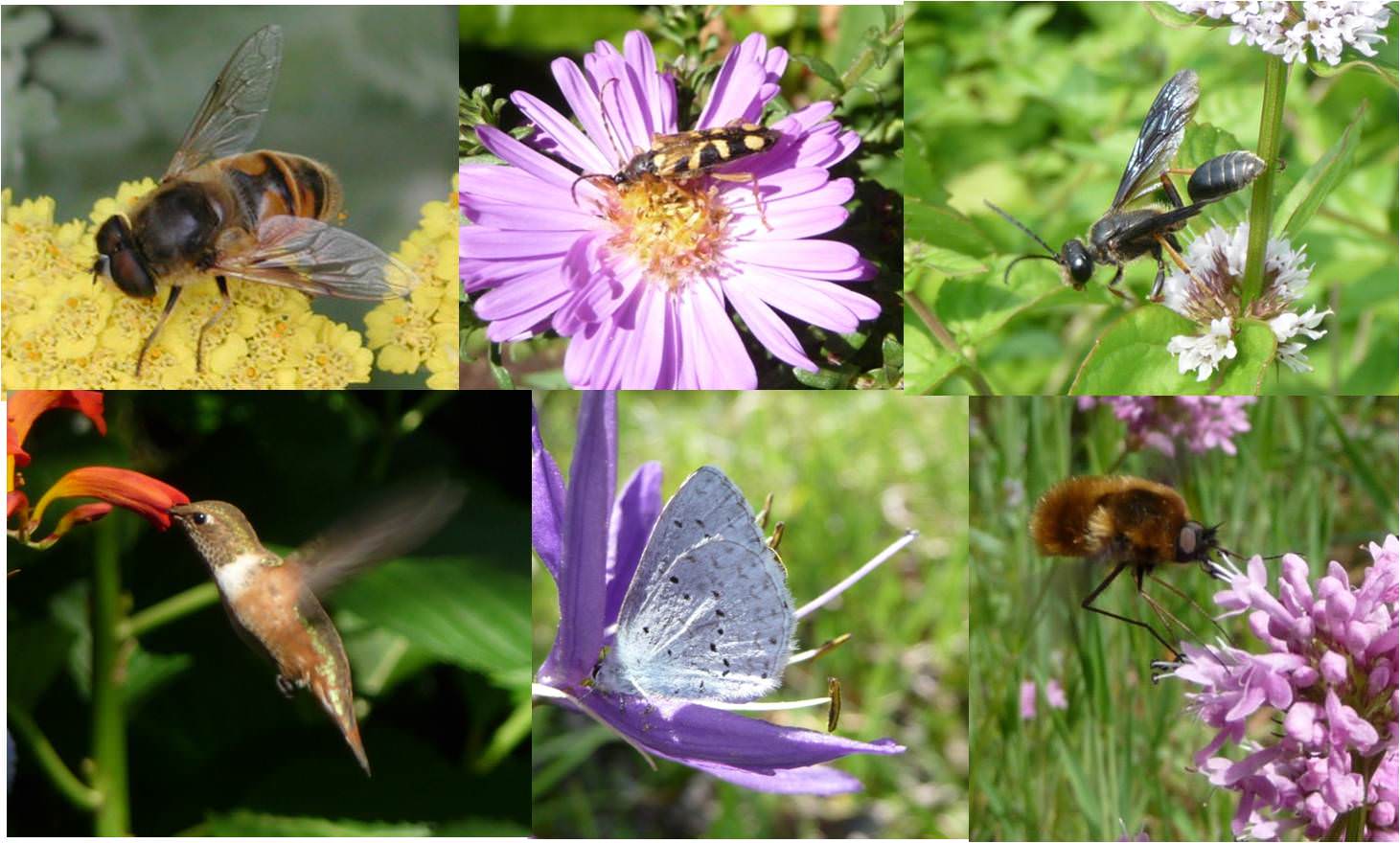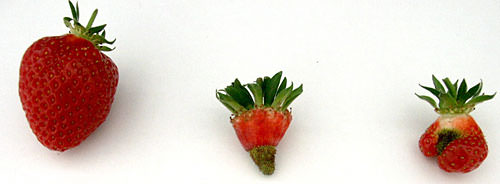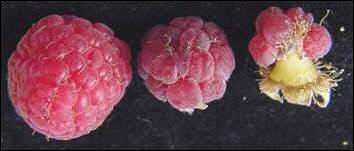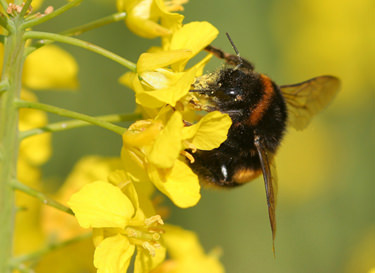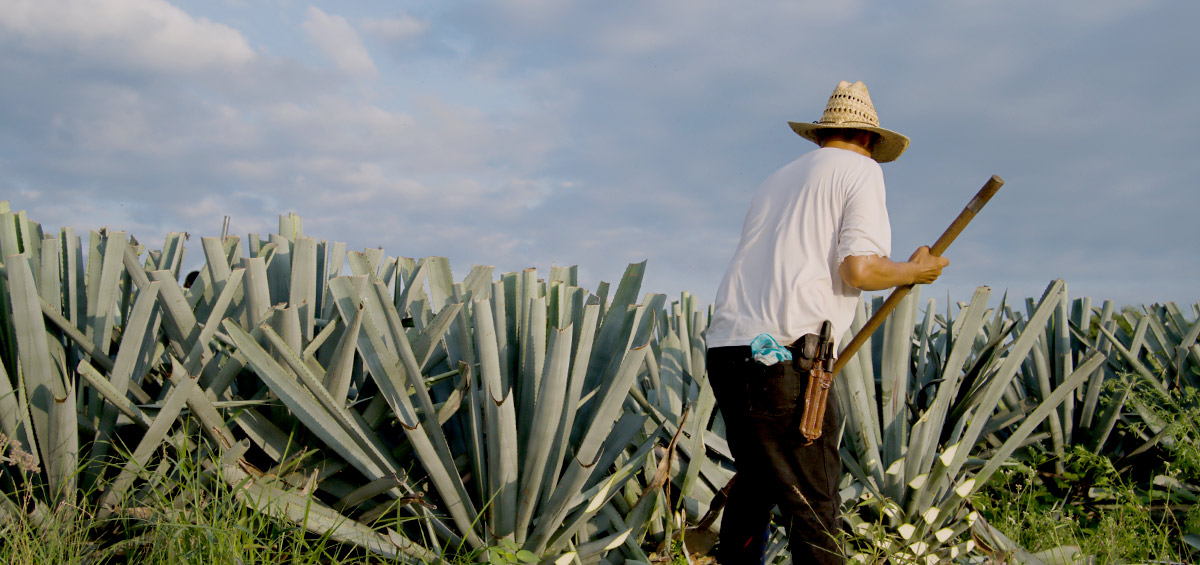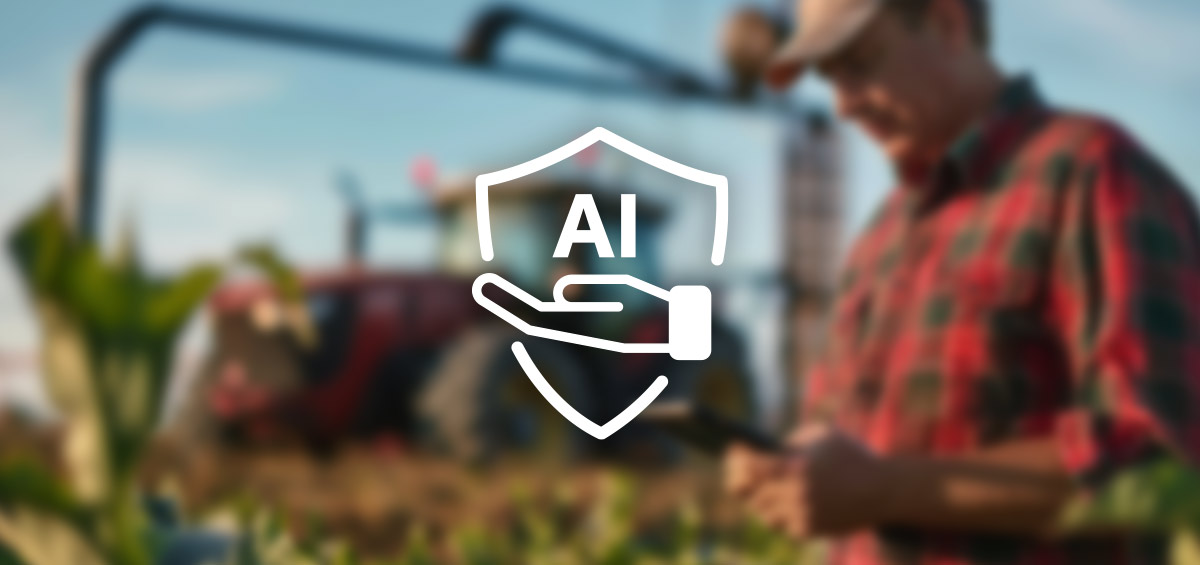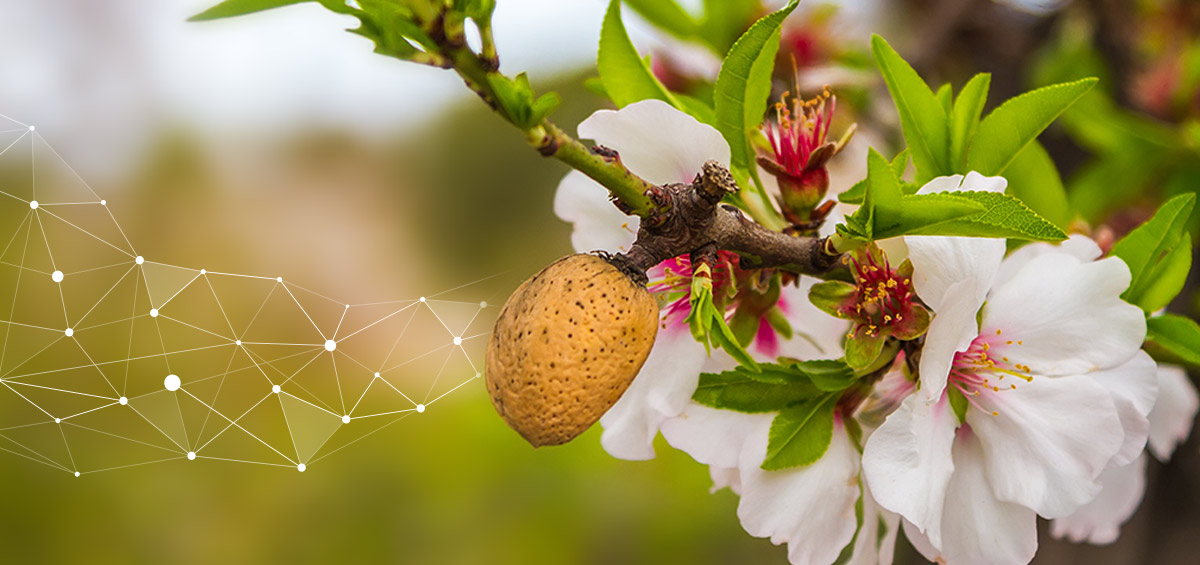Pollination is a keystone process in both human managed and natural terrestrial ecosystems. It is critical for food production and human livelihoods and directly links wild ecosystems with agricultural production systems. Is an essential service that depends to a large extent on the symbiosis between species, the pollinated and the pollinator.
Pollinators include bees, insects, birds and other animals that move pollen from one flower to another, thereby fertilizing plants and allowing them to reproduce. Though bees are the most common group of pollinators, other insects and animals, including wasps, butterflies, flies, beetles, bats, and hummingbirds, are significant pollinators as well.
Native and wild pollinators
In agro-ecosystems, pollinators are essential for orchard, horticultural and forage production, as well as the production of seed for many root and fiber crops. Pollinators such as bees, birds and bats affect 35% of the world’s crop production, increasing outputs of 87 of the leading food crops worldwide, plus many plant-derived medicines. For human nutrition the benefits of pollination include not just abundance of fruits, nuts and seeds, but also their variety and quality; the contribution of animal-pollinated foodstuffs to human nutritional diversity, vitamin sufficiency and food quality is substantial. The size and shape of apples, the oil content of rapeseed and the marketable shape and shelf life of strawberries are all improved by insect pollination.
Photo by Kristine Krewenka, Agroecology, Göttingen, Germany
Photo by Jim Cane, Bee Research Institute, Longan, USA
Example how pollinators affect fruit size and shape. In both pictures pollinated fruit is on the left side.
Why are pollinators important?
Pollinators can increase yield and improve the quality of many crops. Good pollination can increase the stability of crop production, reducing year to year and place to place variability in yield, by buffering effects of climate change and changing land use. If there are not enough appropriate insects available to pollinate crops that need it, then they will not yield to their full potential. Many insect pollinated crops are high yielding, nutritious (packed with vitamins and minerals) and of high economic value.
Pollination services are provided by both managed and native pollinators. Native pollinators play a critical role in the production of certain fruits, vegetables, and forage crops. Native bees, including the blue orchard bee, numerous bumble bees and other native bees, are significant pollinators, and on a bee-per-bee basis, can be more effective than honey bees.
Honey bee hives in canola field.
Honeybees are used widely to supplement wild pollinators and improve crop production, but there are not enough honeybees to pollinate all the crops that require pollination. Commercial honey bee producers providing pollination services manage several hundred to as many as 80,000 hives. The annual almond crop in California alone requires 1.3 million colonies of honey bees to pollinate over 615,000 acres of almond plantations.
Further, honeybees are not the best pollinators for many crops. It is important, therefore, to support both honeybees and wild pollinators. Different crops rely on different insect pollinators. Some crops depend on specialist pollinators, for example beans are heavily reliant on bumblebees. Other crops like oilseed rape, apples and strawberries are pollinated by many different insects including solitary bees, honeybees, bumblebees, hoverflies and other flies. The insects important for pollinating crops can vary from year to year and from place to place and are affected by the climate, weather and local farm management.
Human activity, based on the assumption that pollination is a free and abundantly available ecological service, has put a large pressure on pollinators by both increasing their demand and removing their habitat. Horticulture has rapidly expanded over the last decades, while the landscape has become more uniform due to intensive farming. Lack of pollination has increased awareness of the value and management requirements of this service.
Insect pollinators are essential for food production, improving the yield and quality of crops. Multiple pressures threaten pollinator populations and the pollination services they provide, including changing farm land use, disease, climate change and agrochemicals. This has resulted in declining abundance and species richness in both managed and wild pollinator populations and threatens the stability of crop pollination services. It is therefore essential to conserve and manage insect pollinators as demands on food production increase.
To maintain or improve crop pollination growers and land managers need to:
- Establish flower-rich field margins and reduce the frequency and intensity of hedgerow cutting on farmland to increase floral and nesting resources for pollinators
- Reduce the input and improve the targeting of agrochemicals such as insecticides and herbicides to reduce the risk of negative impacts on pollinators and the flowering plants on which they forage
- Increase the diversity of flowering crops, or rotate beneficial crops such as clover, beans and oilseed, to increase the floral resources available to pollinators in arable landscapes
- Protect semi-natural habitats such as woodlands, heaths and meadows, which provide essential nesting and feeding habitats for diverse pollinator communities
- Establish and/or maintain low-input grasslands which are high quality habitats for a wide range of wild pollinators
- Consider introducing managed pollinators such as honeybees or bumblebees if the pollination demands of flowering crops are not being met in the short term by wild pollinator populations.
Sources: LWEC | Agpollinators | FAO

